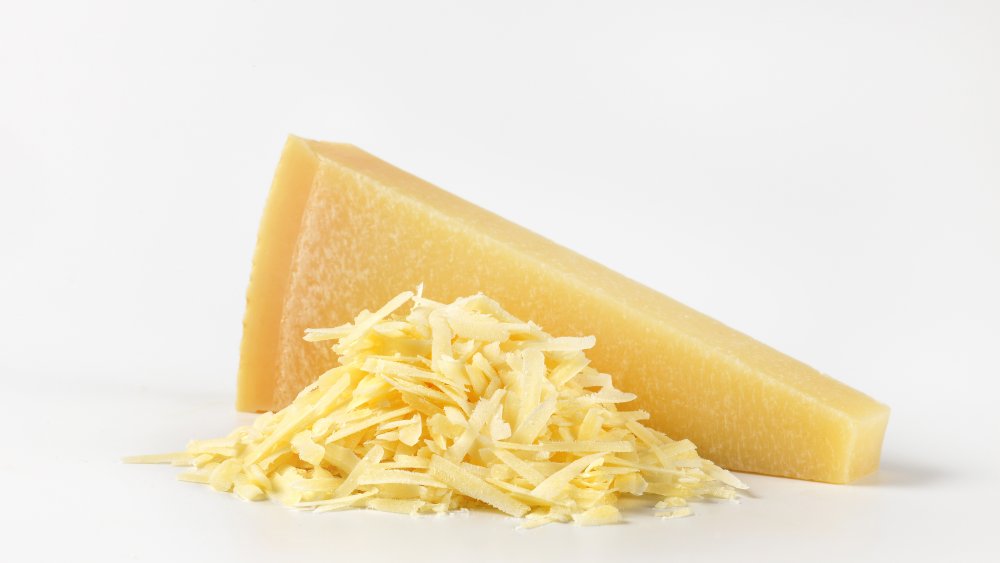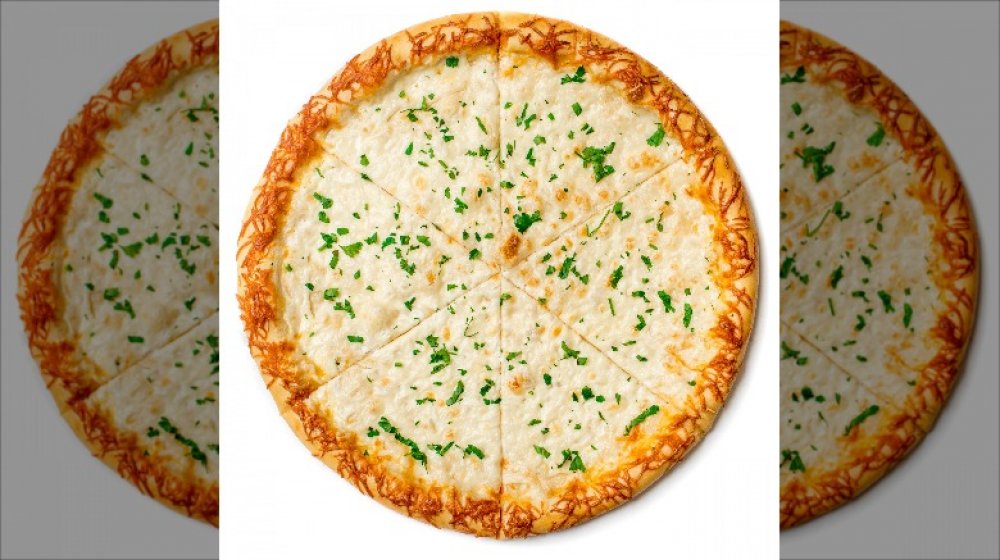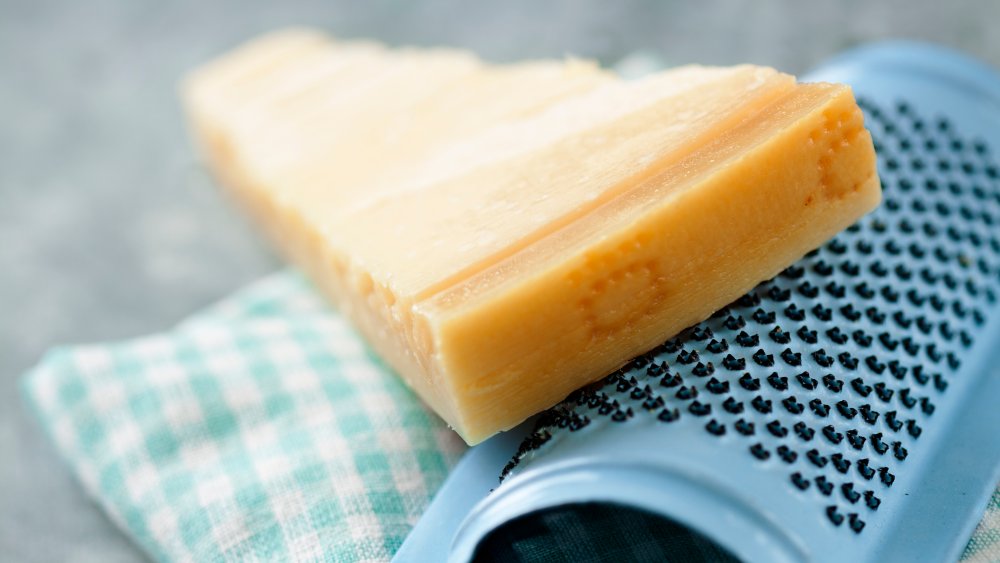The Secret Ingredient Your Homemade Pizza Sauce Needs
When it comes to homemade pizza, the "secret ingredient" many busy cooks turn to is a sauce that comes from a jar or a can. If you'll be going to all the trouble of making pizza at home instead of heating up a frozen pie or dialing Domino's for delivery, though, we think you can do better than that. Homemade pizza sauce is no trouble at all to make from scratch, and you can find numerous recipes for sauces both cooked and uncooked that will make your pizza taste way better than it would if you just resorted to store-bought sauce.
No matter what your go-to recipe is (or even if you absolutely must use the pre-made kind of pizza sauce), there is one secret ingredient guaranteed to make it even better — Parmesan cheese.
Parmesan cheese in your pizza sauce
Parmesan cheese may be better known for something you sprinkle on top of your sauce (particularly when it's topping a plate of pasta), but according to the Fountain Avenue Kitchen blog, it actually complements the tomato sweetness by adding an extra hit of umami. And while The Kitchn's recommendation of adding Parmesan for a "deep savory note" was meant for pasta sauce, it could work equally well for pizza sauce, too.
As a bonus, Parmesan also helps to thicken the sauce up a bit, which, with pizza, is always a good thing. Pizza sauce goes directly on top of a bread-type crust, and thin sauce plus bread dough equals soggy crust. Whether you like your pizza crust thick, thin, hand-tossed, stuffed, or any of its other numerous variants, soggy crust is never anyone's pick.
Parmesan also makes a great white pizza sauce
If you prefer a non-traditional pizza, Parmesan can help here, too. The Cooked With Heart blog offers an amazing recipe for a white pizza sauce made with garlic, butter, milk, Italian seasonings, and Parmesan for a delicious topping that combines both sauce and cheese layers for a quick, easy, and super-delicious pizza.
Even Pizza Hut is on board with Parmesan-based white sauces. In 2014, they introduced three different variants of their new Garlic Parmesan Pizza: Chicken Bacon Tomato, Roasted Veggie, and Five Cheese Please (via Pizza Marketplace). While only a Chicken Bacon (sans tomato) pizza remains on Pizza Hut's specialty menu, the Creamy Garlic Parmesan sauce is still available as a build-your-own or customization sauce option.
Which type of Parmesan should you use in your pizza sauce?
While you can, if you must, use the type of Parmesan that comes in the green, shaker-top canister, bear in mind that it's only 91 percent cheese, with the rest of it being made up with various types of anti-clumping agents and fillers — possibly even wood shavings, yuck (via My Recipes).
Fresh-grated Parmesan might be more trouble, but it also tastes better (and contains no wood whatsoever). As an added bonus, if you use fresh Parmesan, Dinner Then Dessert suggests that the Parmesan rinds cooked in pizza sauce add "a ton of flavor."
Other ingredients that can help your pizza sauce
Pizza sauce made from canned tomatoes tends to be fairly consistent year-round, at least if you're using a high-quality brand (although it's not always necessary to use San Marzanos tomatoes). Should you use fresh tomatoes, though, the flavor may vary throughout the year. At times the tomatoes may be a little too acidic, so a little sugar or honey can help to balance that out. Other times of the year, fresh tomatoes may be bland and lacking in acidity, so a small splash of red wine vinegar can help to add zip (via Stella Culinary).
If you're feeling brave, you may also wish to try adding a small spoonful of anchovy paste to your pizza sauce. This idea, which comes from AllRecipes, is far less obtrusive than adding anchovies on top of a pizza, something only two percent of Americans, according to YouGov, really enjoy (as opposed to the 49 percent of people who loathe them). AllRecipes commenter rightoncue expressed skepticism of the idea of using anchovies, but went ahead and made the recipe as written, and found that there was no fishiness, only a savoriness that balanced out what might otherwise have been a too-sweet sauce.
Stella Culinary School uses an anchovy-based fish sauce to provide a similar savoriness, claiming the sauce has "a synergistic relationship with glutamates contained in the tomatoes," which, ok. While fish sauce may be associated with Asian cuisine, it's actually directly descended from a favorite condiment of Ancient Rome and thus appropriate for use in an Italian-style sauce.




